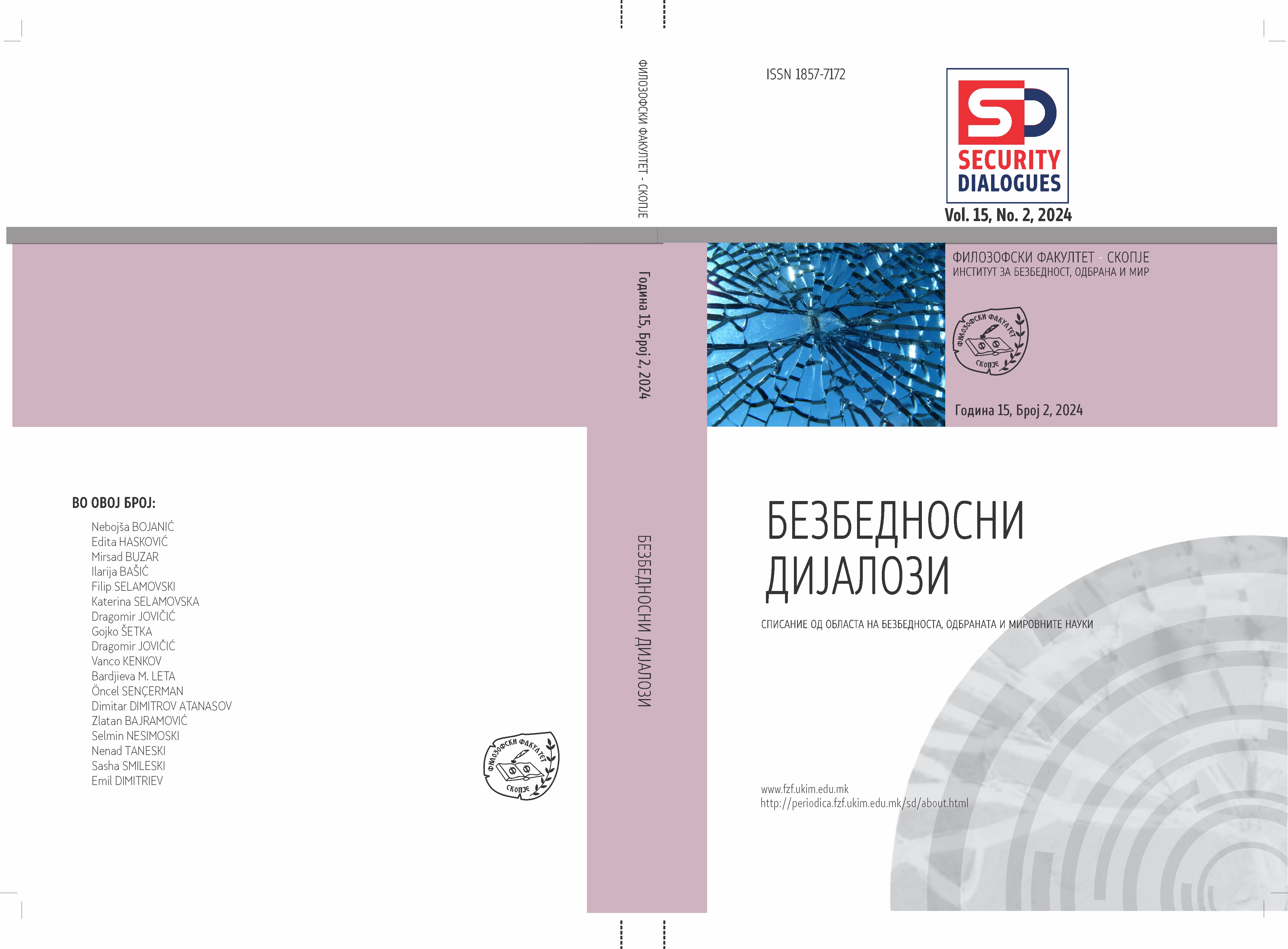SECURITY MANAGEMENT THROUGH THE (NEXT GENERATION) INCIDENT COMMAND SYSTEM MODEL
DOI:
https://doi.org/10.47054/10.47054/SD2415253jKeywords:
security, management, command, coordination, model, ICS, NICS, RNMAbstract
The purpose of this paper is to emphasize the importance of application of the
appropriate model for security management in contemporary security emergencies. Given
the complex nature of security situations and the involvement of multiple security actors i.e.
institutions in their management, it is essential to deliver an effective outcome and minimize
consequences and further escalation.
In the direction of descriptive elaboration, the models of the incident command system
and the incident command system of the next generation, which is the officially adopted
crisis management mechanism in the Republic of North Macedonia, are briefly defined
and presented. With their organizational hierarchy characteristicsfor human and material
resources designation, they counterpoise a common platform for real-time data sharing and
situational awareness.
North Macedonia has adapted the NICS system which is used to coordinate the national
all-hazards response within the context of civil-military cooperation in various security
circumstances. The NICS is developed on the Incident Command System developed by the
Federal Emergency Management Agency as a standardized approach to multifaceted incidents
for a coordinated response among different jurisdictions and entities.
The initial hypothesis in this paper refers to the premise that in a contemporary environment,
the implementation of the optimal security management model should include the dimension
of communication in the form of information and data sharing, coordination of the execution
of the decisions made, and a standardized approach to action. The independent variable
in addition to the hypothesis is that the application of an appropriate management model
aims to create a flexible response with unified action from multiple relevant institutions
from different domains of social activities and should standardize and coordinate the efforts
undertaken. The methodology applied for this research includes qualitative and quantitative data analysis
from relevant primary and secondary sources extracted from field simulation and empirical
examples, deductive argumentation, comparison method, retrospective review and forecasting
conclusions.


